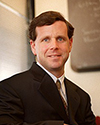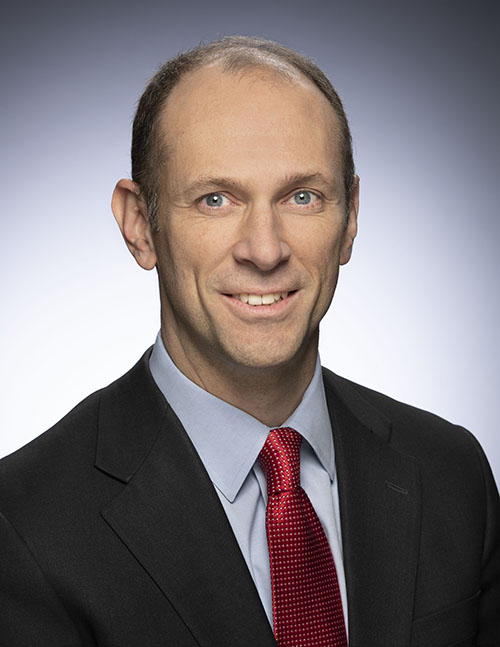Stablecoins that are not fully backed by either central bank reserves or government securities with minimal price volatility are inherently vulnerable to runs.
Responses
© 2025. Kent A. Clark Center for Global Markets.
9%
7%
0%
2%
0%
51%
30%
Responses weighted by each expert's confidence
© 2025. Kent A. Clark Center for Global Markets.
0%
4%
0%
56%
40%
Participant |
University |
Vote |
Confidence |
Bio/Vote History |
|---|---|---|---|---|
 Daron Acemoglu |
MIT | Bio/Vote History | ||
|
|
||||
 Joseph Altonji |
Yale | Bio/Vote History | ||
|
|
||||
 Alan Auerbach |
Berkeley | Bio/Vote History | ||
|
|
||||
 David Autor |
MIT | Bio/Vote History | ||
|
|
||||
 Katherine Baicker |
University of Chicago | Bio/Vote History | ||
|
|
||||
 Abhijit Banerjee |
MIT | Did Not Answer | Bio/Vote History | |
|
|
||||
 Marianne Bertrand |
Chicago | Bio/Vote History | ||
|
|
||||
 Markus Brunnermeier |
Princeton | Bio/Vote History | ||
|
|
||||
 Raj Chetty |
Harvard | Did Not Answer | Bio/Vote History | |
|
|
||||
 Judith Chevalier |
Yale | Bio/Vote History | ||
|
|
||||
 David Cutler |
Harvard | Bio/Vote History | ||
|
|
||||
 Angus Deaton |
Princeton | Bio/Vote History | ||
|
|
||||
 Darrell Duffie |
Stanford | Bio/Vote History | ||
|
It’s roughly the same principle as a money market mutual fund, but the run happens even faster!
|
||||
 Aaron Edlin |
Berkeley | Bio/Vote History | ||
|
There might be other ways to guarantee stability of a stable coin but these are must obvious.
|
||||
 Barry Eichengreen |
Berkeley | Bio/Vote History | ||
|
|
||||
 Liran Einav |
Stanford | Bio/Vote History | ||
|
|
||||
 Ray Fair |
Yale | Bio/Vote History | ||
|
|
||||
 Amy Finkelstein |
MIT | Bio/Vote History | ||
|
|
||||
 Pinelopi Goldberg |
Yale | Did Not Answer | Bio/Vote History | |
|
|
||||
 Austan Goolsbee |
Chicago | Bio/Vote History | ||
|
Next they will tell us why that’s actually good.
|
||||
 Michael Greenstone |
University of Chicago | Did Not Answer | Bio/Vote History | |
|
|
||||
|
Robert Hall |
Stanford | Bio/Vote History | ||
|
Wrong. Less stable backing can be overcome by additional backing; e.g. bonds backed by enough sub-prime mortgages can be AAA.
|
||||
 Oliver Hart |
Harvard | Bio/Vote History | ||
|
|
||||
 Bengt Holmström |
MIT | Bio/Vote History | ||
|
Runs can occur whenever there is a safer alternative
|
||||
 Caroline Hoxby |
Stanford | Bio/Vote History | ||
|
|
||||
 Hilary Hoynes |
Berkeley | Bio/Vote History | ||
|
|
||||
 Kenneth Judd |
Stanford | Bio/Vote History | ||
|
|
||||
 Steven Kaplan |
Chicago Booth | Bio/Vote History | ||
|
|
||||
 Anil Kashyap |
Chicago Booth | Bio/Vote History | ||
|
Should be called unstable coins, they have the same design flaws as MMMFs.
-see background information here |
||||
 Pete Klenow |
Stanford | Bio/Vote History | ||
 Jonathan Levin |
Stanford | Bio/Vote History | ||
|
|
||||
 Eric Maskin |
Harvard | Bio/Vote History | ||
|
|
||||
 William Nordhaus |
Yale | Bio/Vote History | ||
|
Plus need regulatory oversight
|
||||
 Maurice Obstfeld |
Berkeley | Bio/Vote History | ||
|
|
||||
 Emmanuel Saez |
Berkeley | Bio/Vote History | ||
|
|
||||
 Larry Samuelson |
Yale | Bio/Vote History | ||
|
|
||||
 José Scheinkman |
Columbia University | Bio/Vote History | ||
|
|
||||
 Richard Schmalensee |
MIT | Bio/Vote History | ||
|
|
||||
 Carl Shapiro |
Berkeley | Bio/Vote History | ||
|
|
||||
 Robert Shimer |
University of Chicago | Bio/Vote History | ||
|
The only other way to avoid vulnerability to runs is treasury guarantees, but that defeats the purpose of stable coins.
|
||||
 James Stock |
Harvard | Bio/Vote History | ||
|
|
||||
 Richard Thaler |
Chicago Booth | Bio/Vote History | ||
|
Eric Budish has convinced me this is true in theory, and recent events suggest it is true in practice.
|
||||
 Christopher Udry |
Northwestern | Bio/Vote History | ||
|
|
||||

